Even though it was built at the height of the Cold War and hasn't flown in over 17 years, the SR-71 Blackbird still looks like it fell out of the future. The war plane with no weapons not only had the lines of a spaceship, it set the record for the fastest air-breathing manned aircraft in 1976 – a record that remains unchallenged to this day. So how was it built, and what was it like to fly this supersonic denizen of the edge of space?
Birth of the Blackbird
Developed by Lockheed at its famously secretive Skunk Works in Burbank, California, the SR-71 was a derivative of the A-12 reconnaissance plane built for the CIA as a replacement for the U2 spy plane of the 1950s. It was the brainchild of American aerospace engineer Clarence "Kelly" Johnson who, like a real-life Tony Stark, came up with all sorts of remarkable design innovations that pushed forward aerospace engineering.
The SR-71 was built for the US Air Force and operated from 1964 to 1998. The Blackbird, or Habu, as it was also nicknamed after a venomous Japanese snake, could outrun any plane or missile that was sent against it. It set multiple speed and altitude records that have yet to be matched and was one of the first stealth aircraft. It also became stronger as it grew older, despite the fact that it was built by engineers using slide rules. That's a bit like prying open your smartphone and finding a little man inside with an abacus.
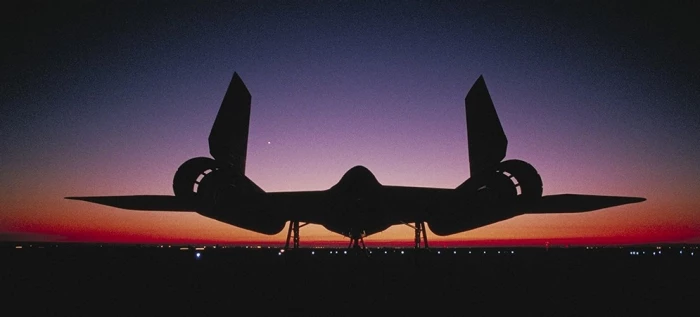
So what motivated the development of this formidable flying dagger? The answer lies in the frostiest years of the Cold War. In the 1950s when NATO became aware of the vital necessity of keeping tabs on the Soviet Union, which since the end of the Second World War had been growing increasingly aggressive while deliberately cultivating the image of possessing an unstoppable war machine with a growing nuclear arsenal.
Fearing both a Soviet sneak attack and the equal nightmare of either side sparking off a nuclear holocaust by accident, President Eisenhower put forward his Open Skies initiative. This was designed to allow US and Soviet recon aircraft to fly over one another's territory, but the Kremlin turned it down like a bed sheet, so the Americans started work on the U2 spy plane that first flew in 1955.
A jet-powered sailplane that's still in service today, the U2 was designed and built for the CIA and its job was to soar over the USSR and Warsaw Pact countries to gather strategic information. Unfortunately, the CIA underestimated the state of Soviet anti-aircraft technology and on May 1, 1960, a U2 piloted by Francis Gary Powers was shot down by a salvo of SA-2 missiles. Powers miraculously survived and was captured by the Soviets, who convicted him of espionage in a show trial before exchanging him for the KGB spy Rudolf Abel in 1962.

But the U2's replacement was already on its way. Under the code name Oxcart, Lockheed developed the single-seater A-12 supersonic reconnaissance airplane. The idea was to overcome the weaknesses of the U2 by building an aircraft that could fly higher and faster than anything else in the skies. The A-12 would be so fast that is needed no escort and no weapons. In addition, it would have a thin, sleek profile and special materials that would reduce its radar profile by 90 percent.
The A-12 (pictured below) contained most of the technology that would go into the SR-71, so a basic description of the technology roughly fits both. It first took to the air on April 1962. Fifteen aircraft were constructed, but they only flew 29 missions over Vietnam and North Korea before being removed from service in 1968.
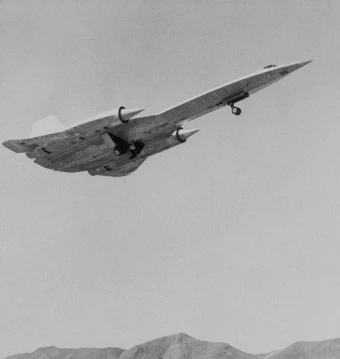
Introducing the SR-71
Meanwhile, the US Air Force was asking for a larger, faster, heavier version of the A-12 that could carry a crew of two. This became the SR (Strategic Reconnaissance) -71.
The surviving Blackbirds now reside in aerospace museums and air force bases in the United States and Britain, but it's still one of those planes that looks like it would leap into the sky if you turned your back on it. Despite being a recon aircraft, the SR-71 isn't a small airplane. At 107.4 ft (32.74 m) long with a wingspan of 55.6 ft (16.94 m) and standing 18.5 ft 6 (5.64 m) high, it tends to dominate any museum gallery it sits in. Empty, it weighs 67,500 lb (30,600 kg) and when fueled and loaded with its payload of sensors, it tipped the scales at 152,000 lb (69,000 kg).

Like the A-12, the SR-71 wasn't just futuristic in looks, but in its construction as well. Most modern aircraft are made of aluminum, but at the speeds that the Blackbird would fly, that wouldn't last very long. So, the new aircraft was made of titanium and composites.
Titanium troubles
In fact, the SR-71 was the largest item anyone had ever attempted to make out of titanium up until that time. That caused all sorts of problems. For a start, titanium is a rare metal and there wasn't enough being produced in the US to build the Blackbirds, so the Americans used third parties and dummy companies to secure titanium from abroad, including from the Soviet Union. This wasn't helped when at one point 80 percent of the titanium bought turned out to be substandard.
The other problem is that titanium is extremely difficult to work and maintain, meaning all sorts of new design and fabrication techniques were required. For example, the quartz outer windscreen had to be fused to the titanium frame using ultrasonics. In addition, the skin wasn't smooth, but corrugated, which caused some engineers to call SR-71 the "Mach 3 Ford Trimotor variant," referring to the 1920s passenger aircraft known as "The Tin Goose." Such corrugations allowed the skin to expand vertically and horizontally on heating, where a smooth surface would split or curl. They also meant that ground crews had to be very careful where they stepped.
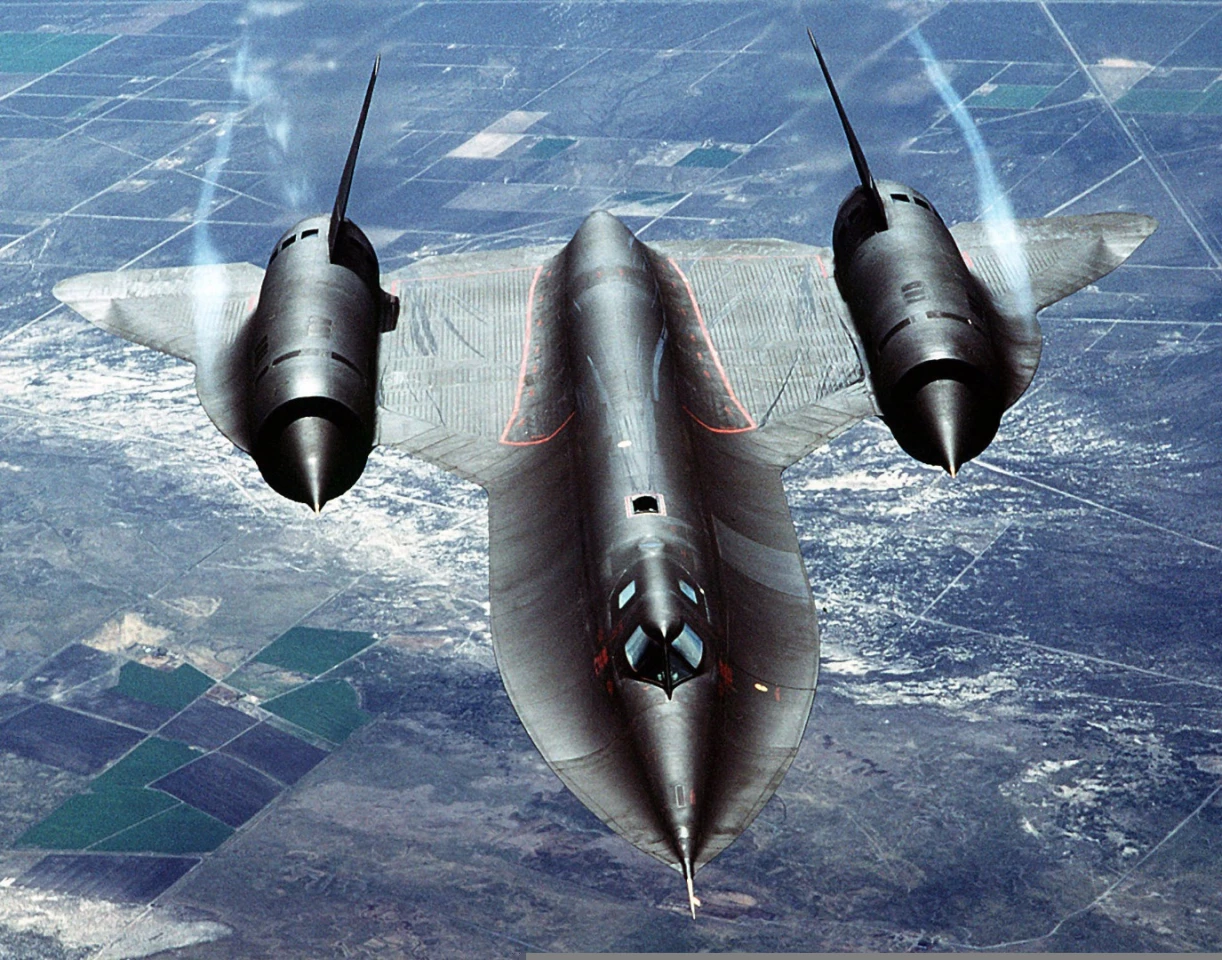
Another problem that simply had to be lived with was leaking fuel. This happened because the Blackbird expanded several inches as it heated up in flight, so the titanium panels only fit loosely when it was on the ground.
All this may seem like a lot of trouble, but the there were also upsides. From the high temperatures caused by flying at Mach 3 plus, the titanium became stronger over the years. Every time it went supersonic, the panels were annealed as if passed through a furnace.
1960s stealth
But the SR-71 wasn't just an advanced bit of titanium forging. It was also one of the first warplanes designed to take off and disappear. Everything about the Blackbird was engineered to make it as invisible as possible. For example, its famous dark livery wasn't meant to make it look like something out of Batman's garage – it had a very practical purpose. And despite its name, the Blackbird wasn't actually painted black, but a very dark blue, so it would blend into the night sky.
All those knife-like angles and dramatic sweeps of the SR-71 weren't just for the sake of aerodynamics either. They were designed to give the plane as small a cross section as possible while deflecting radar beams. What wasn't deflected was soaked up by high-temperature composites with ferrites embedded in them to absorb the energy. In fact, the huge stabilizers were made of composites, marking the first time such a material was used to make a major aircraft component.
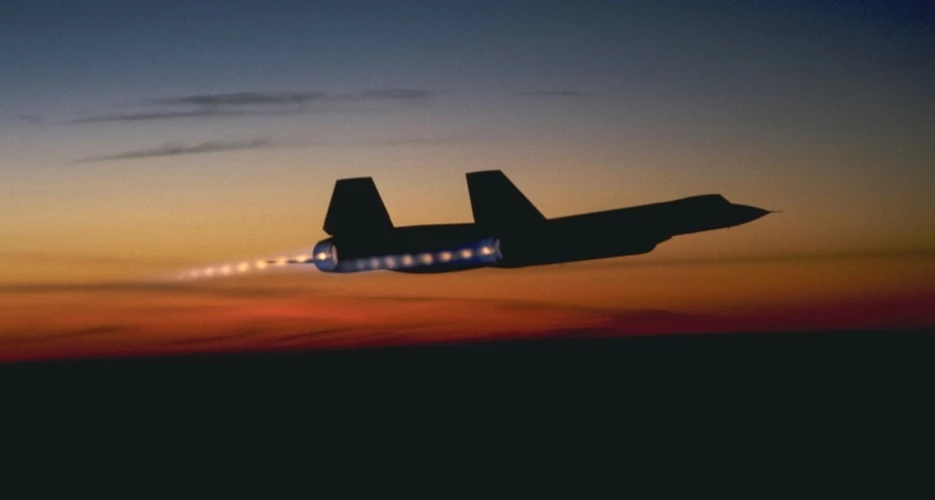
Stealth was also the reason for the plane's distinct chines that sit like knife edges on either side of the fuselage and blend into the wings. When the SR-71 took to the air, the engineers were surprised to find that the chines provided more lift and improved the performance of the aircraft, making the Blackbird more stable, less likely to stall, able to carry more weight, and suffering less drag at high speed. Serendipity!
All this stealth paid off, with the SR-71 having a 10 m2 (108 ft2) radar cross-section – roughly that of a J-3 Piper Cub prop plane. In addition, the fuel was laced with cesium to make the exhaust plumes less visible to radar. Along with state of the art jamming equipment, these elements combined to make the plane almost invisible, but it was a constant race with the Soviets that was difficult to keep ahead of.
When all of this was put together, the Air Force had one incredible machine. It's two Pratt & Whitney J58-1 engines could each punch 34,000 lbf (151 kN) of thrust and at 85,000 ft (25,900 m) it could reach a maximum speed of Mach 3.3 (2,200+ mph, 3,540+ km/h, 1,910+ knots). Though its range was only 2,900 nm (3,337 mi, 5,400 km), it could be refueled in-flight, so its only limit was the endurance of the crew.
In the cockpit
So what was it like to fly the Blackbird? Not surprisingly for an aircraft designed to fly at the edge of space, the preflight rituals were similar to those astronauts undergo. Before each mission, the two-man crew was given a medical then a final briefing of the carefully planned flight.
They then sat down to a high-protein breakfast of steak and eggs. This had less to do with morale than it did with making sure that the crew were properly fed for the long flight. The meal was also designed to minimize the need to relieve one's self – a very unpleasant prospect at 85,000 ft and no lavatory.
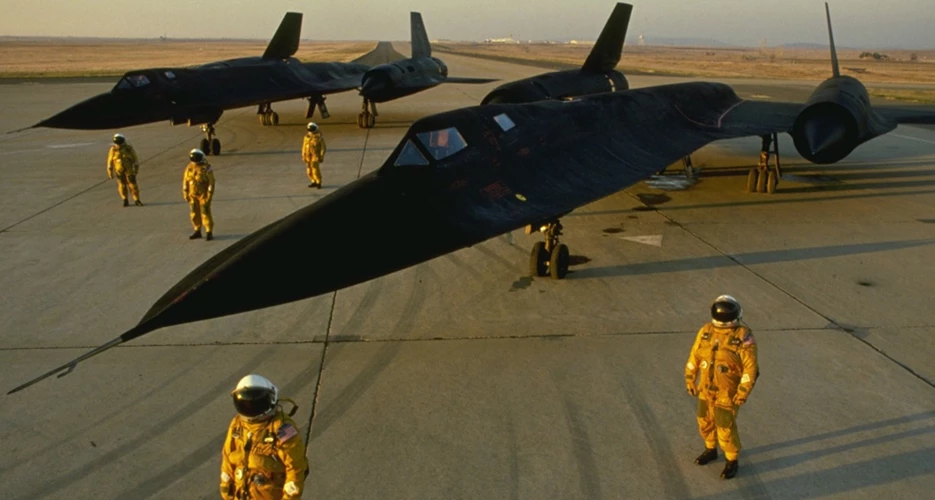
The crew then donned their flight suits. Specially made by the David Clark Company, these cost US$120,000 each and because of the high altitude, were very similar to those worn by the Space Shuttle crews, with a helmet feeding them pure oxygen to reduce the chances of the bends should the plane suddenly depressurize.
In addition, an emergency ejection at Mach 3.2 would subject crews to temperatures of about 450° F (230° C), then to subzero temperatures that would cause them to simultaneously freeze and suffocate while their blood boiled in the near-vacuum above nine-tenths of the Earth's atmosphere. This would happen before their parachutes ever had a chance to open, so the high level of protection was literally vital.
Once the crew were suited up, they were conveyed to the SR-71 in a van equipped with reclining armchairs. On arrival, the Pilot sat in the forward seat and the Reconnaissance Systems Officer (RSO) sat aft. After getting into the cockpit, they had to sit patiently while assistants made sure everything was hooked up and secured, the ejector seat armed, and the canopy closed and latched.
Take off
The SR-71 wasn't a self-starter. Instead, getting the J58 engines to turn over required the assistance of a start cart holding two Buick V8 engines. These were connected to the drive shaft and fired up, creating an unholy din as they were spun up to 3,200 rpm. The system was later replaced at the Blackbird's main bases with a pneumatic device running on compressed air.
Though the SR-71 program was headquartered in the US, its two primary bases were at RAF Mildenhall in England and Kadena AFB in Okinawa, Japan. But wherever it took off from, the takeoff procedure was very similar. The great black plane taxied out and when the "go" signal was given, the mighty engines let rip and the SR-71 tore down the runway and into the air. Scarcely had the wheels broken contact with the ground then the undercarriage was retracted and the nose pulled up for a fast climb.
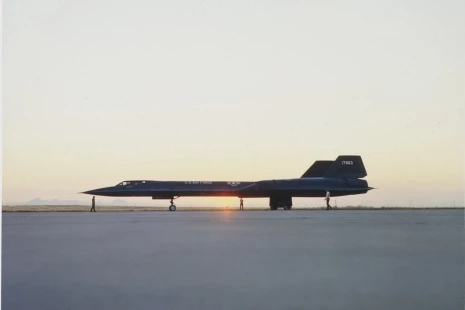
This fast takeoff wasn't just for show either. The SR-71's rapid acceleration was a safety maneuver, because while the Blackbird might be a graceful denizen of the stratosphere, close to Earth it was more like a brass duck. The pilot had to get up as much speed as possible so that if an engine failed he'd be able to maneuver for a landing or a safe ejection.
Another peculiarity of the takeoff was that aside from informing local air traffic control of the event, it was carried out in complete radio silence, which was maintained until the aircraft returned to base, so prying ears wouldn't learn anything about the plane or its purpose.
Refueling
The first thing the SR-71 did after taking off was refuel. This isn't it because ate up too much fuel on takeoff or due to the leaking titanium panels. The aircraft was deliberately kept under-fueled to minimize stress on the airframe. This also meant that the empty space in the tanks was taken up by air, which had to be forced out or there was a chance that it would start a fire when the plane went supersonic and the fuel heated to 350⁰ F (177⁰ C).

To refuel, the SR-71 would rendezvous with a fleet of up to three KC-135Q Stratotankers, which had been specially modified to carry out refueling at the tanker aircraft's maximum speed. When refueling was completed, the Blackbird's six main tanks were loaded with 80,250 lb (36,401 kg) of fuel and any leftover space was flushed with cryogenic nitrogen.
Climb and accelerate
Once the SR-71 was topped up, it was time for it to get on the job. The pilot nosed it up, hit the throttles and the aircraft accelerated into the supersonic and beyond Mach 3 with seeming effortlessness.
What made this possible were the two Pratt & Whitney J58 engines. These monsters were each 4.75 feet (1.45 m) wide 17.83 feet (5.44 m) long and grew another 6 inches (15 cm) when they heated up. They weighed about 6,000 lb (2,700 kg) apiece and put out 34,000 lb of thrust.
Originally designed for the US Navy, the J58 is often, though not quite accurately, called a turboramjet because it functioned as both a turbofan engine and a ram jet by reconfiguring itself in flight as it climbed and accelerated, enabling it to operate continuously at Mach 3.2 without melting.

Heat was a constant problem for the SR-71, which grew so hot that when it landed the ground crews had to careful not to burn themselves on its skin. The engine used a special lubricating oil that remained stable at 600⁰ F (315⁰ C) and the windscreens were made of quartz to survive equally high temperatures. To keep the engine and other systems cool, the fuel was cycled inside to the chines, which acted as radiators.
The fuel itself was JP-7 and was so hard to ignite that the ground crew were allowed to continue working on the plane during fueling operations. Anything else would have turned the SR-71 into the world's fastest moving Molotov cocktail. To ignite it in the afterburners, the chamber was squirted with triethylborane (TEB), which spontaneously ignites on contact with air and was so dangerous that it had its own special cooling and ejection system.
The J58 engines were most efficient when traveling at about Mach 3.2, but getting there was another matter. The key, as mentioned above, was the remarkable ability of the engines to reconfigure themselves as the SR-71 accelerated, as well as their ability to recover and reuse as much energy as possible.
While accelerating up to Mach 2 (1,523 mph, 2,450 km/h), the J58 acts like any other turbojet engine. The air was drawn into the front of the engine and compressed by a six-stage compressor, then it goes into the combustion chamber, where it mixes with fuel and burns, creating thrust. So far, that's no different any passenger jet. But when the Blackbird goes supersonic, fuel is shot into the afterburner behind the engine and ignited with TEB, punching the aircraft to much higher speed.
These afterburners were already common on military jets when the SR-71 was designed, but on early fighter jets, supersonic speeds were only attained in short bursts because the afterburner wolfs down fuel. That was no good for the Blackbird with its cruising speed of Mach 3.2.
The key to achieving this feat is the way air is managed inside the J58. As the Blackbird goes faster, the moving parts in the engine become more of a hindrance than a help because they produce more and more drag. So, at Mach 2.2 air is bled off of the compressor using six bypass tubes that feed the air from the compressor straight into the afterburner.
Effectively, this turns the engine into a ramjet – a simpler, faster engine, where the air compresses itself by the speed of the plane moving forward. This makes the J58's afterburner operate with much higher efficiency and allows it to operate at temperatures of up to 800° F (427° C).
Meanwhile, at the front of the engine a sharp aerospike is doing its job. It may look like a spearhead, but in cross section, it's actually a plug shaped like a plumb bob. Its purpose is to set up a shock wave in front of the engine inlet to protect it from the full impact of the air ahead. It also sets up shockwaves inside the inlet to slow the air down to subsonic speeds under high pressure before it hits the compressor.
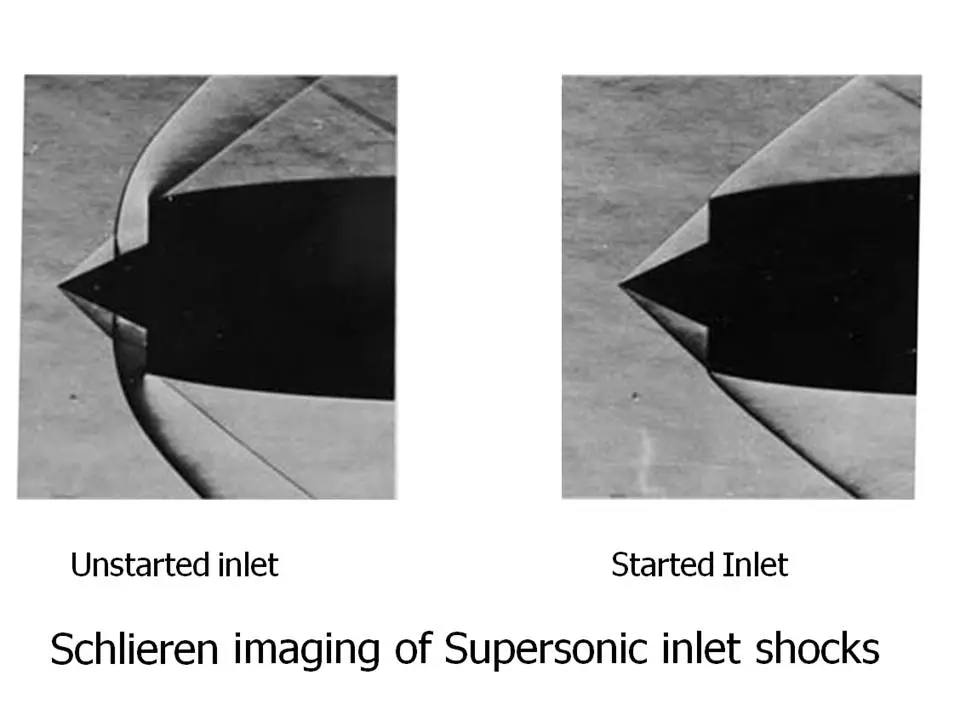
The best spot for this interior shockwave differs with the speed of the aircraft, so the aerospike was designed to move forwards and backwards by up to 26 inches, depending on the aircraft's speed. In this way, instead of the shock wave moving, the engine reconfigures itself, so the wave remains in the optimal position and produces maximum fuel efficiency.
Another clever element is that the spike itself isn't solid. It uses air scoops to capture air, reduce it to subsonic speeds, and send it around the engine inside the nacelle to keep it cool. There are additional air inlets in the front and back of the engine to bleed in outside air to cool the engine at subsonic speeds – especially during takeoffs and landings. In addition, there are also a second set of inlets in the rear that open at very low speeds to prevent drag inside the engine.
The important thing about all this is that the J58 is not only able to configure itself to fly at Mach 3.3, but also at subsonic speeds to allow for in-flight refueling.
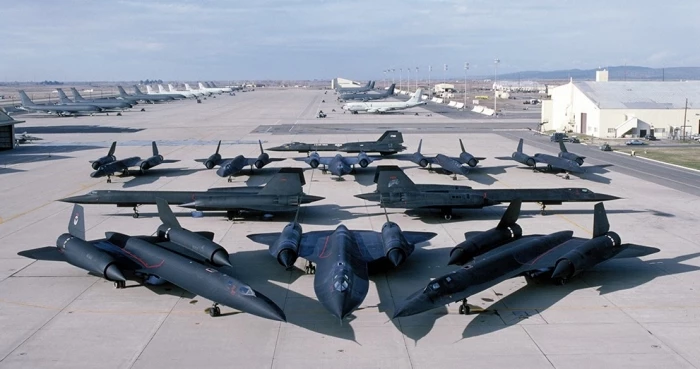
All of this was controlled by the pilot and simple analog computers. If the internal pressure became too great, the shockwave would blow out the front of the engine and cause an "unstart," which could shut down the afterburner and cause the aircraft to yaw violently, then counter-yaw as the pilot and systems tried to correct. According to pilots, this often happened as the most unexpected times – usually when everything seemed to be going just fine.
Recon by the stars
Once the SR-71 reached cruising speed and altitude, it was time to focus on the mission, which was to collect information about hostile and potentially hostile nations using cameras and sensors. The pilot's job was to handle the aircraft and watch over the automatic systems to make sure they were doing their jobs properly. Meanwhile, the RSO handled the cameras, sensors, and the all-important Astro-inertial Navigation System (ANS).
The ANS was the 1960's version of GPS, but instead of using satellites to locate itself, the ANS used the stars. This is because before the invention of the modern satnav networks there wasn't a way to navigate the SR-71 in the areas where it operated. The spy plane needed to be able to fix its position within 1,885 feet (575 m) and within 300 ft (91 m) of the center of its flight path while traveling at high speeds for up to ten hours in the air.
The ANS works by tracking at least two stars at a time listed in an onboard catalog, and with the aid of a chronometer, calculates a fix of the SR-71 over the ground. It was programmed before each flight and the aircraft's primary alignment and the flight plan was recorded on a punched tape that told the aircraft where to go, when to turn, and when to turn the sensors on and off. The stars were sighted through a special quartz window and there was a special star tracker that could see the stars even in daylight.
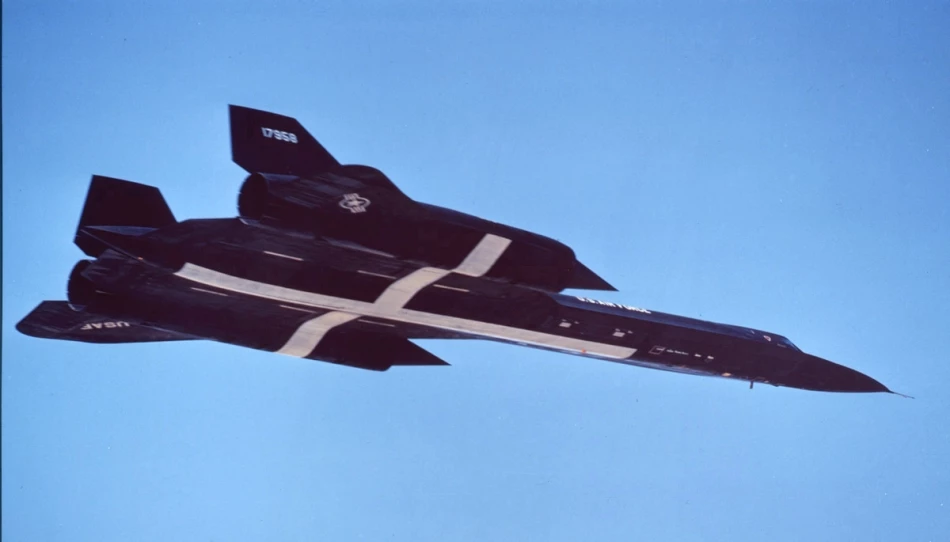
The ANS was the responsibility of the RSO, who was also in charge of the cameras and sensors. These were located in payload bays in the chines and the nose of the SR-71. The wide-angle cameras could cover areas up to 2,952 nm (3,397 mi, 5,467 km) away and could take both regular and stereographic images in visible and infrared, with a resolution measured in inches.
There was also a special infrared camera that documented the route of the mission from beginning to end. Though the SR-71 overflew many countries, it never penetrated the territory of the USSR or the People's Republic of China. The tracking camera was insurance against any accusations that it did so.
The sensors included a Side-Looking Airborne Radar (SLAR) built by Goodyear and an ELectronics INTelligence (ELINT) suite. The SLAR was later replaced with Loral's Advanced Synthetic Aperture Radar System (ASARS-1). The radar systems were for ground mapping while the ELINT was for recording electronic signals in the area.
ELINT was particularly important because it provided information on radar, electronic acquisition, tracking and guidance signals for the Soviet SA-10 anti-aircraft missile and other weapon systems. One advantage of sending in the SR-71 over or near hostile territory was that it immediately attracted a lot of attention, so it was a common practice to use the Blackbird to poke the hornet's nest and record what type of electronics were turned on it, which could be up to 500 emitters at one time.
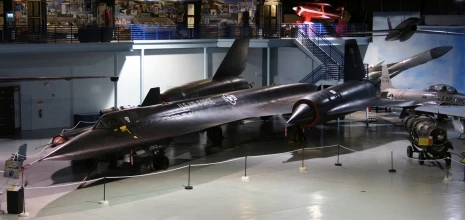
This scenario sometimes saw the spy plane work in coordination with an RC-135 reconnaissance plane, with the Blackbird acting as bait. As the SR-71 provoked a response, the RC-135 recorded the emitters at a safe distance via its more extensive suite of sensors.
In the event of an emergency ...
With such a high-flying, superfast aircraft like the SR-71, reacting to emergency situations was a huge challenge. For example, the RSO was in no way the co-pilot of the aircraft and didn't have any flight controls in his cockpit. If the pilot was incapacitated, his only hope was to adjust the ANC to take the SR-71 over friendly territory, then eject – not a very pleasant thought at Mach 3.2.
Not surprisingly, an even bigger headache was enemy action. The Soviets weren't content with just tracking the SR-71. On numerous occasions they sent up interceptors and missiles with the express purpose of shooting it down, but during the Blackbird's entire operational life they never managed it.
If the sensors detected a target radar lock, the procedure was simple. The RSO would monitor the automatic radar jamming equipment and intervene manually when necessary while the pilot hit the throttles. This may seem a bit simple, but between the SR-71's stealth design, jammers, altitude, and sudden burst of speed, the aircraft was practically invulnerable.

If an interceptor or a surface-to-air missile was sent against the SR-71 from behind, it couldn't hope to catch it before the plane got out of range – if the sudden speed burst didn't foul up the radar lock first. Even if a missile did manage to give chase, by the time to got up to altitude, it would rapidly use up fuel and its guidance systems couldn't cope with the thin air.
If the hostiles tried to position a fighter jet or missile in front of the SR-71, the results were much the same. The Blackbird would close with the ambushers so fast that the radar had trouble locking and the primitive computers of the day couldn't calculate and intercept course fast enough before the plane was long gone.
In all, 800 missiles were fired at SR-71s. None came close to a hit, though one scared the life out of the crew over Libya when it was launched without a radar lock. The first clue of its approach was a pillar of smoke rising into the sky and the pilot, Brian Shul, threw the throttles into full and achieved an unofficial speed of Mach 3.5 (2,665 mph, 4,288 km/h).
Back to Earth
At the end of the mission, it was time to bring the SR-71 back to Earth, but it wasn't as simple as it seems. The pilot didn't have much control over throttle settings as the aircraft went subsonic and the operation was pretty much set in stone once the afterburners were taken offline. As the pilot watched over the engines to avoid malfunctions, the Blackbird would descend and decelerate dramatically.
To conserve fuel, the timing of the deceleration had to be carefully chosen so the Blackbird was as close to the refueling fleet or airbase as possible. If the aircraft was landing at Okinawa, it would almost be on top of the tiny island, but if it was in England it had to be before it reached land to avoid shattering every window in East Anglia. As in takeoff, the crew would maintain radio silence until touchdown except for requesting their approach heading from air traffic control.
As to the landing, it was as spectacular as the takeoff. The SR-71 hit the runway at 155 knots (178 mph, 287 km/h) with the nose 10 degrees up and only about 10,000 lb (4,535 kg) of fuel left. Because of the long nose, the pilot couldn't see the runway markings and the tarmac came up fast as the plane flew straight in while the delta wings caught the air under it and cushioned the touchdown.
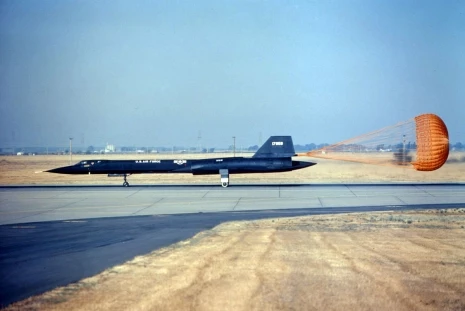
The rear tires were a special blend of rubber and aluminum and filled with nitrogen to ensure against catching fire. These cost $US2,3000 each and lasted about 20 missions. To help slow the plane down further and save the tires, the pilot pulled a handle that deployed a series of three drogue chutes ranging in size from 42 inches to 40 feet in diameter. As the last deployed, the pilot let the nose wheel touch down. When the speed reached a mere 55 knots (63 mph, 102 km/h) the last chute jettisoned and the Pilot could use the brakes.
The future of supersonic spy planes
The SR-71 remained in operation until October 1999, though most of the fleet was deactivated in 1989 when the program was officially ended. During its time, the Blackbirds went from flying once a week to once a day and of the 32 built, only 12 were lost – all to accidents and mechanical failures.
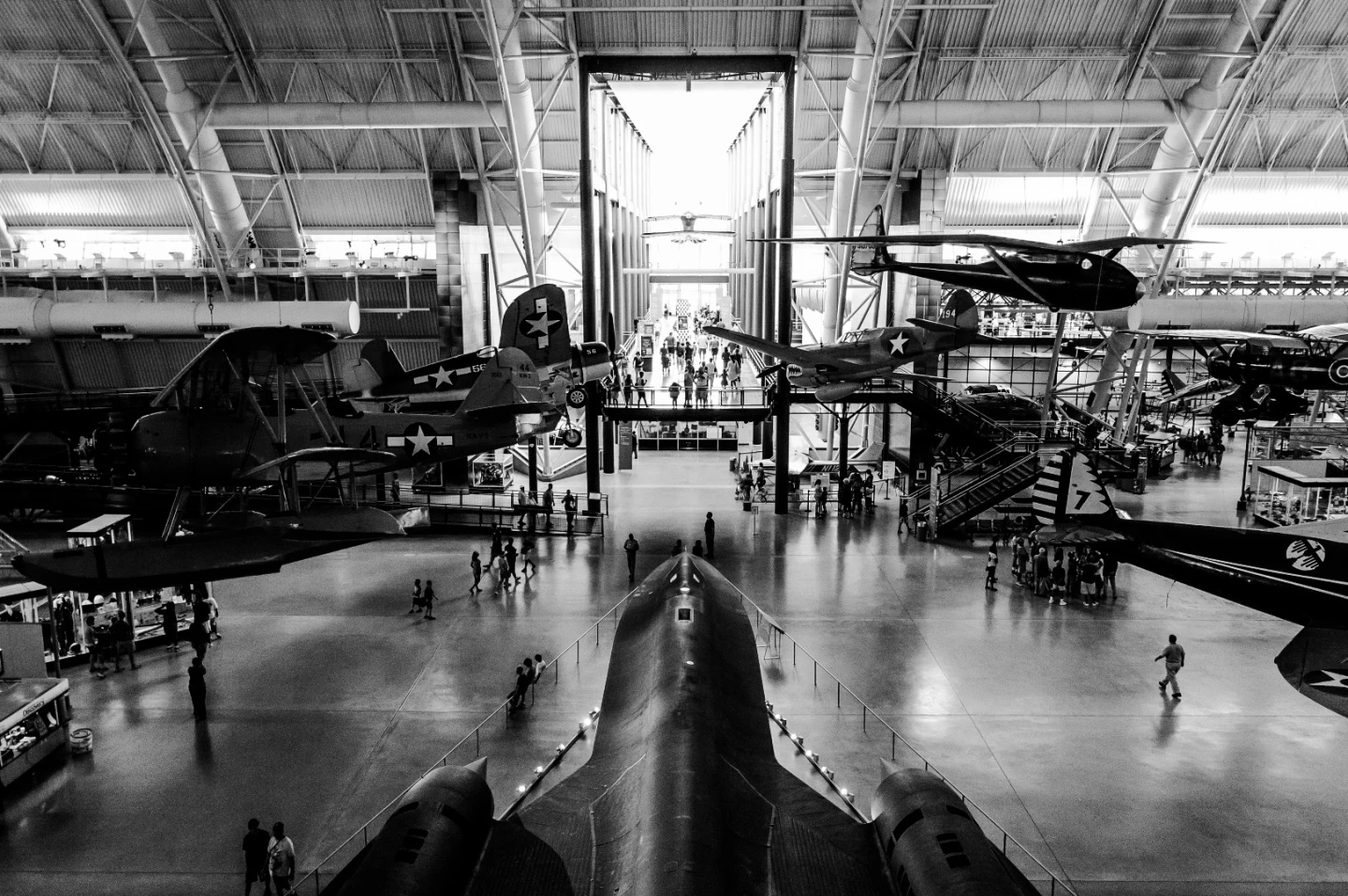
Before it came to roost in museums, the Blackbird collected an impressive set of records. On July 28, 1976, Captain Robert Helt broke the absolute altitude record for sustained height by reaching 85,069 feet (25,929 m) and on the same day, another SR-71 set a still-standing official speed record for a manned air-breathing jet of over Mach 3.3 (2,193.2 mph, 3,529.6 km/h).
The plane also holds the record for speed over a recognized course by traveling from New York to London in one hour 54 minutes and 56.4 seconds, which works out to an average speed of Mach 2.72 (2,071 mph, 3,332 km/h). The same journey took the Concorde 2 hours and 52 minutes, while today's airliners take over six hours. In addition, it set the records for Los Angeles to Washington DC, US West Coast to East Coast, Kansas City Missouri to Washington DC, and St Louis to Cincinnati – all records that will stand until a replacement for the SR-71 comes along.
But what will replace it? That depends on what its mission might be. The development of sophisticated surveillance satellites that could do the Blackbird's job as a fraction of the cost put paid to the supersonic spy plane. Why spend hundreds of millions on a complex infrastructure to keep the SR-71 flying when Google Earth can let you know what's happening in Vladivostok?
But spy satellites still have very real limitations – not the least is the fact that their orbits are predictable and getting one over a target location can take up to 24 hours. So there is an argument for building a new spy plane that can be sent out on demand.
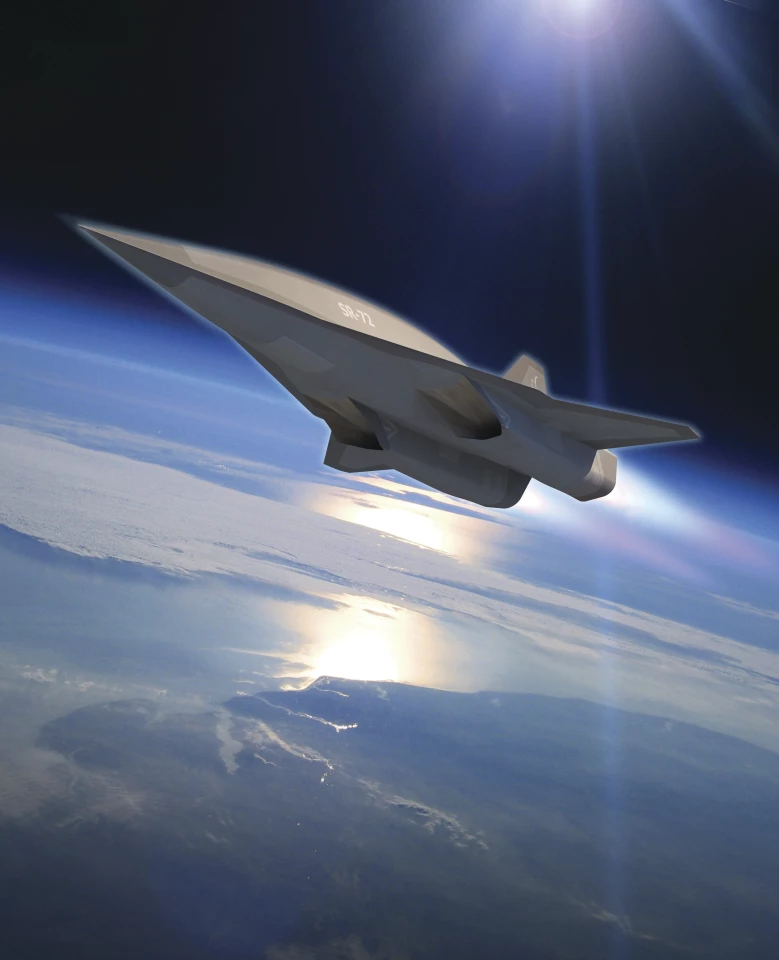
One possible replacement is under development at Lockheed Martin's Skunk Works. Christened the SR-72, the new aircraft wouldn't be just supersonic, it would be hypersonic. That is, it would fly at Mach 6 (4,568 mph, 7,350 km/h) and be able to cross whole continents in an hour thanks to a new Turbine-Based Combined Cycle Propulsion system that incorporates a turbine engine and a dual-mode ramjet.
At the moment, the US Air Force isn't showing much interest in the SR-72, but if it changes its mind, Lockheed says that a demonstrator could take flight in 2018 and the aircraft proper could enter service by 2030. If so, the next generation of air traffic controllers may once again be saying, "What the heck was that?!"
This article was written with the kind help of Colonel Richard H Graham (USAF (Retired)), author of SR-71; SR-71 Revealed; SR-71 Stories; Tales, and Legends; Flying the SR-71 Blackbird; and the commentary for the SR-71 Flight Manual.











